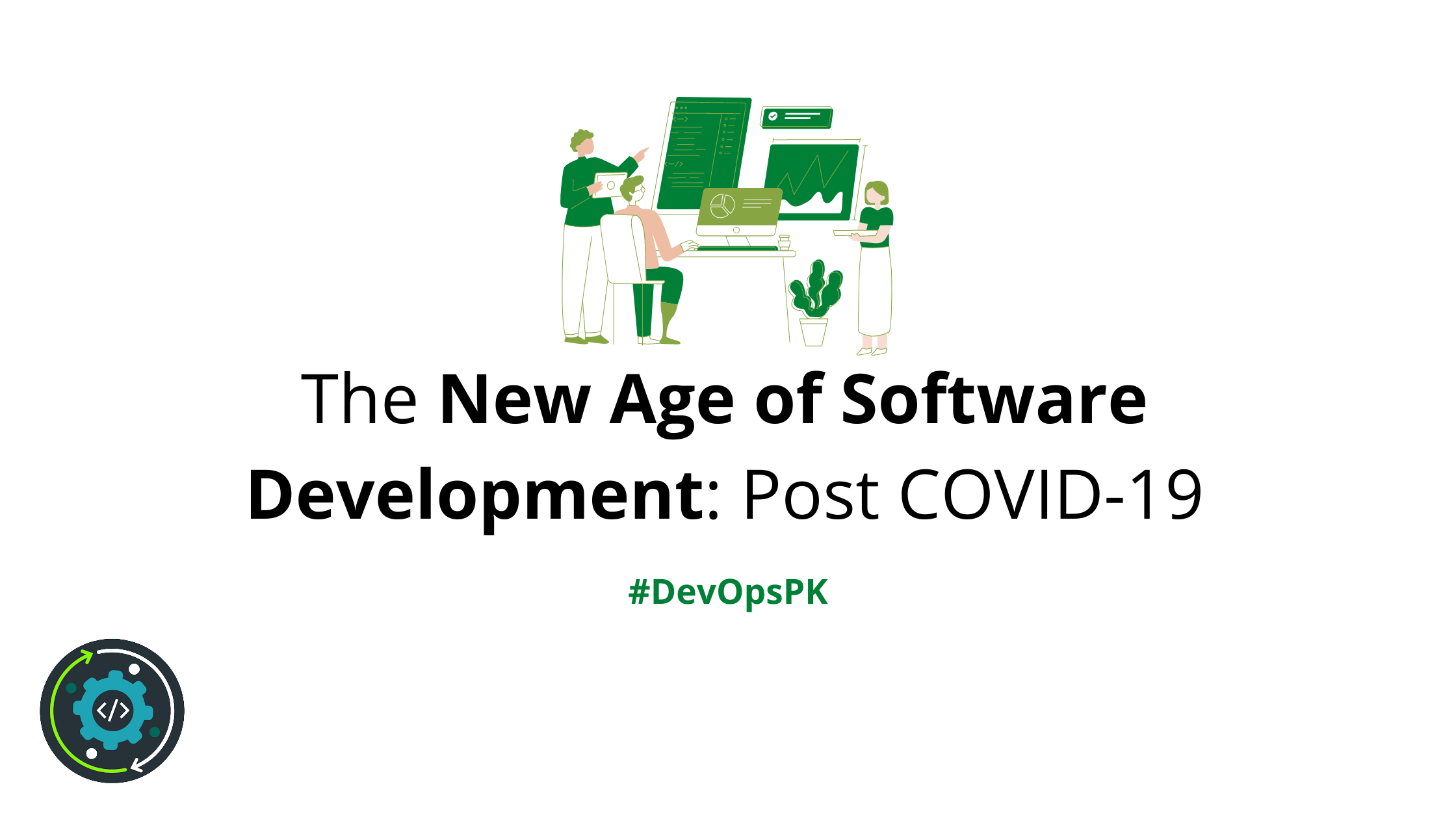The Covid-19 pandemic that has hit the world in 2020 has devastatingly impacted routine life and impacted workers in two distinct ways. On the one hand, experts playing the most crucial role like medical professionals and caretakers, emergency service providers, or those linked with the food and agricultural industry bound them to go to work daily. It has proved the importance of their contribution to society. On the other hand, a huge part of the working population has to work from home due to travel restrictions and other containment measures. Despite being a comfortable situation for many compared to the struggles of front-line workers, it also involves some notable challenges. Even beyond more serious challenges related to social justice and family life, important questions started to raise as to whether working remotely is productive or not?
Table of Contents
The New Age of Software Development: Post COVID-19
One profession that is worth looking at more closely is software development. Software development has immense importance because human experiences and professional and social norms often exclusively depend on digital technologies in our digital era. In the beginning, we may be persuaded to think that working from home is negligible for software developers as writing code can easily be done everywhere and anytime. The tech-savvy software developers should not have a problem with using collaboration tools. Most of the practices in modern software development are inspired by the way remote teams work. But in the long run, the current situation is likely to reform the way software development works in a pre-Covid era as more and more employees will become comfortable working from home. The introduction of new tools and platforms that will make remote work more convenient and productive will eventually bring a drastic change in the way software development teams used to work.
What will happen to software development teams once the crisis is over?
What medium- and long-term impacts will continue the ongoing pandemic cast on software development teams? Which teams will handle the situation effectively? What will happen once teams are required to go back to the office and develop software on-premise again?
Although these are tough questions that need more analysis and research, what will likely be the scenario for organizations, in general, can also be assumed True Positive for software development teams. Let’s discuss this scenario in detail.
The crisis triggered by Covid-19 is plausibly going to widen the gap between teams that perform well and those that don’t. The teams that had not been performing well before the crisis will probably struggle even more. On the contrary, those teams that worked well before the crisis might be able to capitalize on the new opportunities and curbing probable threats.
Is Psychological Perspective instrumental in Adaptability?
Teams struggling before the crisis in technical and social areas of teamwork may face more trouble while coming back to normal. They may somehow cope up with the forced work-from-home period. But they will likely experience difficulties due to the aftermath of this pandemic shortly. They have faced a harder time during the current crisis as they lack appropriate architectures and methodologies and lack vital teamwork factors. During the forced work-from-home period, looming threats may escalate, exacerbating teamwork. However, the more plausible case is that problems that should have been brought to the table are solved, which will prove to be a powder keg of the future as conflicts may remerge again. All these crises will lead to technical debt, which needs to be addressed later on but in parallel with social debt, which refers to the liability of decisions related to people, interactions, and social intellect.
The aftermath of the pandemic will likely appear differently for teams that adapted well by molding and setting up proper organizational infrastructure and development methodologies to ensure stability and scalability and effective teamwork structures and behaviors. For Instance, by successfully ensuring employees’ psychological safety and improved mutual understanding. Those teams may be able to capitalize on the hidden opportunities and outcomes associated with them. As individuals, most of us have faced how dealing with the crisis pushed by a pandemic has opportunities and threats for our personal life and mental health. Individuals may or may not easily find suitable personal strategies for handling the crisis.
In any case, such a devastating crisis may trigger the sudden transition of priorities and let individuals push towards the existential crisis. We cannot dehumanize the software development teams by ignoring the human side of these individuals. Teams that survive and thrive past the crisis may have the resources and exposure to apply their learnings afterward and reform their routines, utility support, and organizational structure. Also, teams that perform well will have realized that they can rely on their trusted partners and their mutual mental models and that these teamwork factors help them grow even in the time of crisis.
Survival and Thrival in Post-Covid Era?
As this pandemic will end sooner or later, the influence it has made will remain intact. Naturally, these shifts will trigger evolution in the way businesses approach software engineering. To adapt to new behavior patterns and ways of doing things, companies must reimagine how they build software. There are immense possibilities and alternatives in terms of architectures, development models, technologies, and infrastructure possibilities to opt from. The following practices will become mandatory to survive and thrive in the Post-Covid era.
1) Customer and Business Centric Software Product Strategy
This pandemic has made us realize that software is now instrumental in the success of every business and every industry. The objective is to develop software products with customer needs and perspectives in mind. Organizations must ask themselves several questions as they revise their software strategy.
- Can customers do business with us anytime, anywhere?
- Do we have the right mediums of engagement such as browsers, mobile applications, voice assistants, etc.?
- Is the product so user-friendly that customers can use it with little or no training?
- Finally, is the customer experience both functional and enjoyable?
2) A Robust, Scalable, and Cloud-Native Strategy
Most of the companies who realized the importance of the cloud are already in the transition towards the cloud. Businesses can capitalize by extracting the most value from the cloud. But what are the determinants of value addition? Can our applications take full leverage of cloud automation and scalability?
For businesses that are simply shifting their monolithic applications and content to the cloud have bad news. They need to acquire a cloud-friendly or cloud-native application architecture. Apart from that, enterprises must ask if their applications are secure. Cloud-native architectures like Headless CMS and API approaches make deployments easier to distribute over multiple channels, and therefore more complex. To ensure success, businesses need a holistic approach to security, with modern methodologies and approaches that can secure thousands of containers and web application firewalls.
3) An Integration of Agility, Development, and Operations
It’s high time now to welcome DevOps. With Agile development and DevOps, working code can be shared to production within no time compared to the conventional waterfall development. Moreover, businesses must start to think about where developers work. The Covid-19 crisis highlights the need to allow developers to work anytime, anywhere. Teams must be equipped with the following toolset to ensure productivity:
- Collaboration tools like Microsoft Teams, Slack, or Miro, etc
- Conferencing tools such as Webex, GoToMeeting, BlueJeans, etc
- Independent developer environments like Visual Studio Code, Eclipse, NetBeans, etc
- Pair-programming tools USE Together, Visual Studio Live Share, etc
- DevOps tools like Jenkins, Docker, Phantom, GitHub, etc.
How to Get Prepared?
As the Covid-19 pandemic ends, the strongest businesses will be the ones that incorporate the following recommendations and transformations.
- Transformation and Modernization Efforts to Ensure Digital Supermacy and Inventory Management
If organizations don’t already have a digital medium for customers and suppliers, they should start developing one immediately to respond timely to new evolving business and market trends.
- Improving Cloud Migration Strategy
To enjoy the perks of cloud infrastructure. Companies should do more than simply shifting the existing applications to the cloud, which provides little or no benefits. Instead, it’s crucial to introduce API-friendly and Cloud-native applications by replacing the monolithic approach with the headless microservices, thus lessens the time and effort required to meet the new consumer requirements. Businesses should think about application security holistically by detaching themselves from the conventional concept of edge security alone.
- Acquiring the Talent of the Diverse Global Workforce
Either directly or by partnering with IT vendors with established and tested processes and culture for working anywhere, anytime.
Conclusion
A black swan event like COVID-19 is not less than an apocalypse. It can be devastating for many but at the same time opens new opportunity corridors for those who can see it. As the world continues to cope with the Covid-19 crisis, forward-looking organizations will alter the course and focus on addressing the evolved and emerging customer needs.
Interesting outcomes and new facts can be expected when teams come onboard again after the lockdown. We will see teams adapted to the strategies above for extended periods to get back on track easily. Getting back on track will require solving technical problems and mental and social issues that have emerged during the lockdown period. Teams that performed well before the crisis may find opportunities even in these hard times and appear more successful than ever.


Leave a Reply